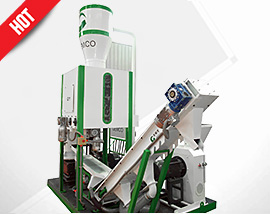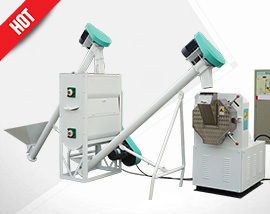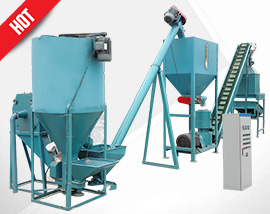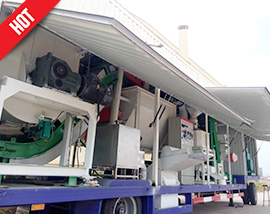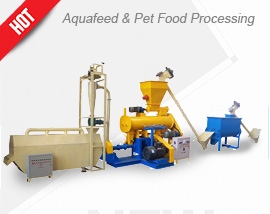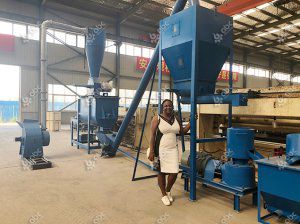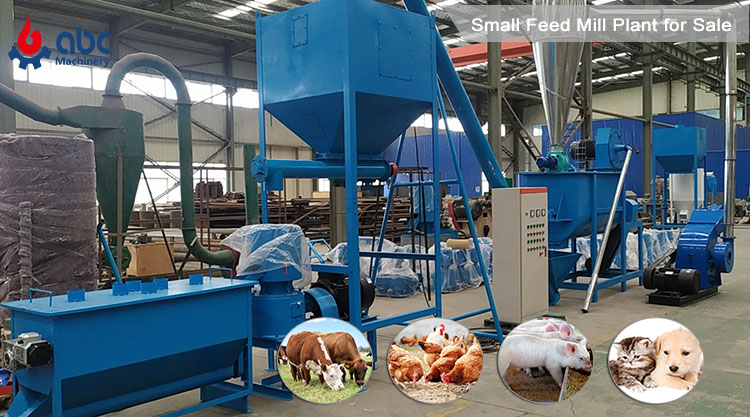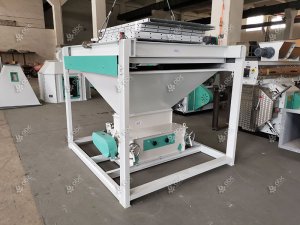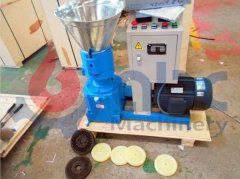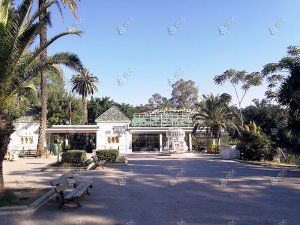10 ton/h Poultry Feed Plant
Project Name: Complete Livestock and Poultry Feed Plant
Feed Plant Capacity: 10 tons feed pellets cane be made per hour, which is equal to 60,000 tons per year.
Application: It is suitable for processing livestock and poultry feedstuff into premium feed pellets. (chicken feed, duck feed, pig feed, cattle feed, etc)
Larger Project: 20 t/h Animal Feed Mill Plant
Setup Complete Poultry Feed Plant
View the factory construction photos below to get a brief understanding of the complete livestock & poultry feed mill plant. If you want to get a customized project plan based your feed formulation and cost budget, send us an inquiry now!
Poultry Feed Plant Project
Pretreatment Equipment
Feed Pellet Machine
Cooling and Packing Equipment
Poultry Feed Manufacturing Plant Cost
The cost of establishing chicken feed factory is acturally related with various different factors, such as feed ingredients, production output, degree of automation, process design, equipment selection & layout. Here are some approximate project costs for your reference:
- 1 ton per hour mash feed production line: The equipments cost about 1,6000USD.
- 2~3 ton per hour animal feed processing plant for making both mash feed and feed pellets: About 6,5000USD
- 5 ton per hour poultry feed mill plant for making both mash and pelleted feed: About 140,000USD
Frontiers in Chicken Feed Manufacturing Production
There is a strengthening trend to develop feed manufacturing systems and procedures that could, to a large extent, eliminate microbial contamination of feed. The overall concept is to provide the animal a feedstuff that is free from any pathogens that could harm human health. There are two methods in accomplishing the task of feed sterilization: feed processing and chemical treatment. Each method has its own advantages and disadvantages. (Product list of our Feed Pellet Machinery for Sale >>)
There is considerable work occurring in Canada evaluating new technologies to combat microbial loads in feed. Feed companies that are actively sterilizing feed are utilizing advanced conditioning techniques combined with sterile air cooling systems. The theory is that:
"Once the pellets leave the feed pellet mill and are cooled by the sterilized air, downstream microbial contamination of the feed is minimal."
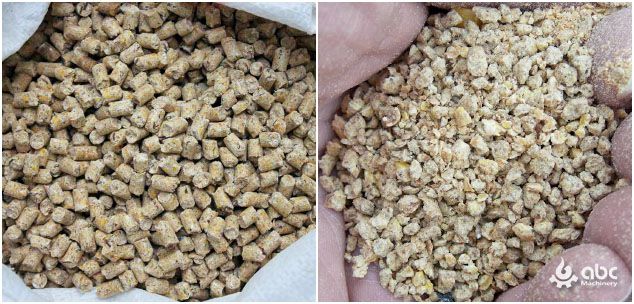
Feed Pellets (left), Feed Crumbles (right)
Typically, livestock or poultry feed plants that adopt this strategy require a strong QA programmer to detect microbial loads in the mill and finished feed, as well as a HACCP (Hazard Analysis and Critical Control Points) approach to plant operations. (Related Product: Set up a Poultry Feed Mash Line )
Make The Best Feed Formula for Your Chicken Feed Plant
Before starting your own chicken feed manufacturing plant, it is necessary to know about poultry feed formula. The chicken flocks have different feed utilization rates at different growth stages, such as it is lower for chicks. Only when all kinds of nutrients (such as energy, protein, amino acids, vitamins, minerals, etc.) can meet the poultrys' nutritional requirements and reach the optimal ratio, can it be able to Maximize feed conversion. On the contrary, it will inevitably cause waste of feed nutrients. (Read more about cost of running a poultry feed factory)
- Carbohydrates
Carbohydrate feeds mainly contain starch and sugars, which can account for less than 70% of the dietary mix. Corn is one of the highest energy feeds in cereal feed, which can account for 45 to 70% of the feed. Bran has good palatability, and contains more protein and carbon, which can account for 5% to 30% of the feed. Barley contains high crude fiber, so the amount should not be too much (15% to 20%). Sorghum tastes astringent. Too much can cause chicken constipation, which can account for about 10% of the feed. Rice bran is often used as an auxiliary material, and it should not exceed 8%.
- Protein Feed
It refers to the feed with protein content 30 to 65%. It can account for 5 to 30% of the feed. Soybean oilcake and peanut oilcake are good choice as plant protein feeds with good palatability and comprehensive nutrition. Due to toxins, cottonseed cakes should not be used in excessive amounts, generally not exceeding 7%. Fishmeal is the best as animal protein and can account for 5 to 15% in poultry feed production.
- Green Feed
Green feed is mainly used to supplement the deficiency of vitamins, and is generally account for less than 30% in feed mixture.
- Mineral Feed
Mineral feed can account for 0.3-9% of feed mixture. Bone meal is mainly supplemented with calcium and phosphorus, generally 1% to 2.5%. Shellfish powder mainly supplements the deficiency of calcium, the proportion can be 1 to 7% (Laying hens should take more, and other chickens should take less). Salt mainly supplements the lack of sodium, often accounting for 0.3 to 0.4% of feed products. The salt content of fishmeal must also be taken into account.
Note: Add a small amount of grit (0.5%~1%) when manufacturing chicken feed. It can increase the feed utilization rate, especially after the chicken is 1 month old. (Related Post: Poultry Feed Business in Nigeria)



